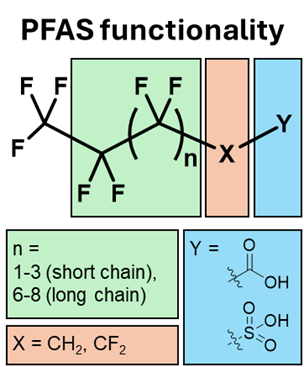Combined impacts of microplastics and per- and polyfluoroalkyl substances (PFAS) on metabolomic functions of bioenergy crop rhizosphere bacteria.

interactions below ground.
As the quest for a sustainable agricultural future and a circular bioeconomy continues, the impact of widespread contamination looms in the background. Plant-microbe interactions play an integral role in plant health and creating a conducive environment for success of bioenergy crops under diverse environmental stressors. However, soil contamination remains an all-too-common reality. This work focuses on two widespread contaminants, microplastics (MPs) and per- and polyfluoroalkyl substances (PFASs) found in agricultural soils. While these common pollutants have garnered considerable research attention recently, most studies focus only on a single contaminant, overlooking the reality that these pollutants coexist in the environment. Our goal is to determine the impacts of MPs and PFASs (alone or in combination) on switchgrass rhizosphere bacteria using mass-spectrometry based metabolomics. By capturing a snapshot of the organism’s global metabolism, we can infer its health status and project possible impacts on bioenergy crop production.
Contaminant effects on rhizosphere bacteria metabolome and perturbations linked to both PFAS molecular structure and environmental nutrient availability.

individual Per- and polyfluoroalkyl substances
(PFASs) molecules.
The impact of contamination on agriculture lands can’t be ignored as the need for both food and non-food crops rise and the use of marginal land for biomass crops increases. Per- and polyfluoroalkyl substances (PFASs) are anthropogenic compounds used for their unique properties but are now considered widespread toxic contaminants and are either banned or being phased out of continued use. Literature looking at PFASs in plants and soil have been on the rise since 2018, however little is understood on the environmental impact, particularly around the rhizosphere microbiome, one of the most microbially diverse communities in the environment. This project focuses on PFASs with varying molecular structures in order to find a metabolomic fingerprint associated with the chemical and physical properties of individual PFASs.